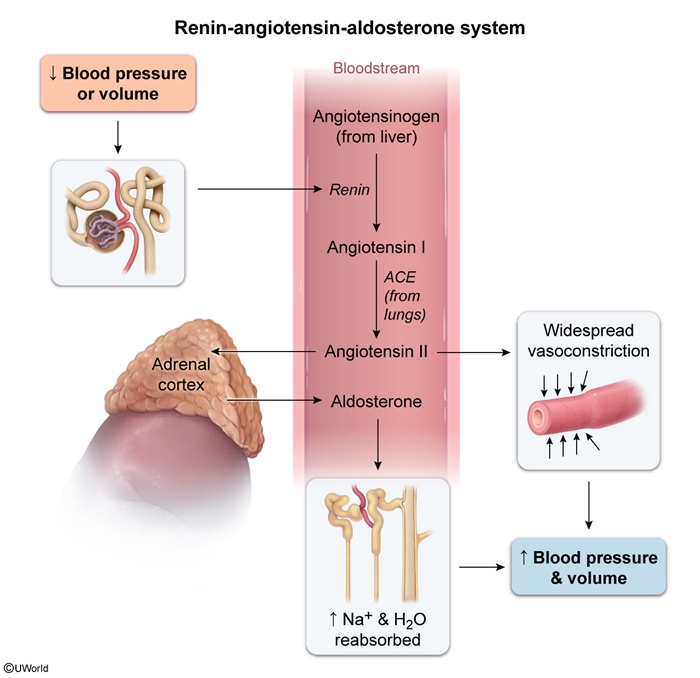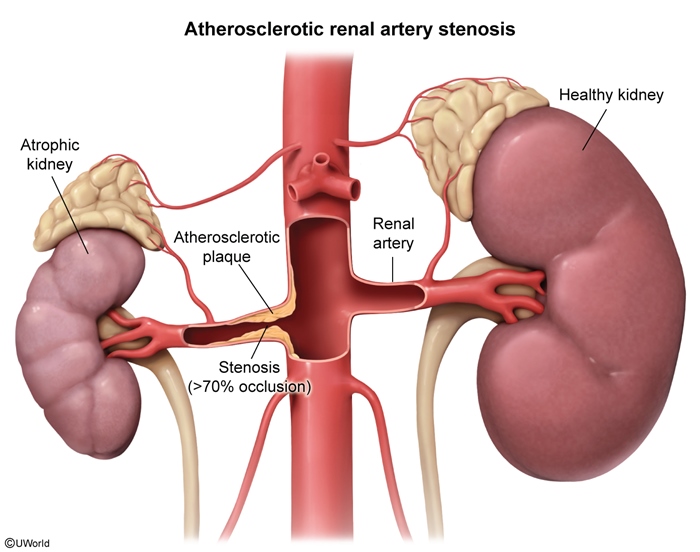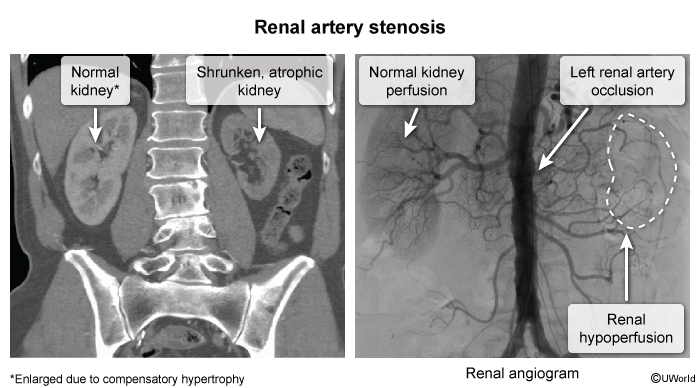Renal Artery Stenosis
Article Sections
Introduction
Renal artery stenosis (RAS) is characterized by narrowing of one or both renal arteries, leading to reduced blood flow to the kidneys. The hallmark of RAS is renovascular hypertension, a notable cause of secondary hypertension accounting for approximately 1%-5% of all cases. RAS can also contribute to the development of chronic kidney disease (CKD). Early recognition and management of RAS are crucial to prevent progressive renal damage and associated cardiovascular complications.
Pathophysiology
RAS involves narrowing of the renal artery lumen, which reduces renal blood flow and activates the renin-angiotensin-aldosterone system (RAAS) (Figure 1). This activation leads to systemic vasoconstriction and fluid retention, resulting in hypertension. Hypertension occurs in both unilateral and bilateral disease, as renin secreted by the affected kidney leads to systemic effects, impacting both kidneys.
Continue Learning with UWorld
Get the full Renal Artery Stenosis article plus rich visuals, real-world cases, and in-depth insights from medical experts, all available through the UWorld Medical Library.
Figures


Images
